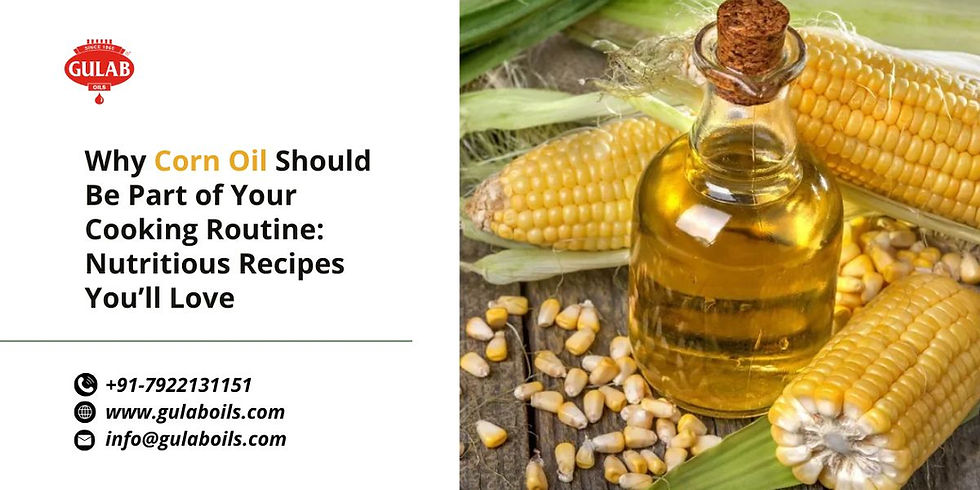Do you want to know the refining process of corn oil?
- litamiller2020
- Jul 7, 2023
- 2 min read
Corn oil is extracted from corn and is highly nutritious, also called corn oil. It is commonly used as an edible oil, but it's high smoke point makes it very valuable as a frying oil. Besides cooking, refined corn oil is also used in making margarine. The refining process removes these unwanted and harmful elements from crude oil and gives it its most valuable properties such as pleasant taste, smoke resistance, color change and flavor development. Let's start with refining corn oil.

Corn oil refining process
Crude corn oil is refined through an alkaline neutralization process, a chemical refining process involving many steps. The main steps in the refining of crude corn oil by alkaline neutralization are:
Conditioning and neutralizing gums
bleaching
Overwintering
deodorize
Gums conditioning and neutralization
In this process, crude oil is first treated with acid (citric/phosphoric acid) followed by caustic to neutralize the oil and then the soap is separated. The oil separated from the soap is washed with hot water to remove soap scum and dried to obtain neutralized oil.

Bleaching
In this process, the interaction between absorbents and oils removes color pigments, polyaromatics, dirt, trace metals, phospholipids and other contaminants, improving quality. The oil is heated first, then fuller's earth is added to the oil under atmospheric conditions to utilize the moisture in the fuller's earth for better results. In the refined corn oil process, the corn oil is heated with a separate heater operating under vacuum. After the corn oil is heated, it is fed to the bleaching reactor for desterilization and refining of the refined corn oil.
Overwintering
This process removes high melting point components such as saturated triglycerides and waxes from the oil. The vegetable oil cools slowly and the saturated glycerides crystallize. The process consists of fractional crystallization of fats and oils followed by solid-liquid separation through a filter.
Deoxidizing and deodorizing
This is the final step in edible oil refining, where a certain amount of stripping agent is passed through the hot oil at fairly low pressure for a certain period of time. Pretreated oils are further processed to remove fatty acids, odors and other components. This process is performed at high temperature and high vacuum with the introduction of steam. This process removes any remaining free fatty acids and odorants, making the oil suitable for human consumption. For more information: https://www.gulaboils.com/
View source:-




Comments